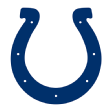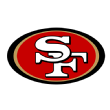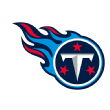Below are notes for each of the league's 32 teams. In this week's special edition, I'll be examining one potential 2018 fantasy breakout player from each team. Use these tidbits to make the best waiver-wire, trade and keeper decisions this offseason, or simply keep them in mind for when you begin preparing for your drafts this summer. Be sure to check back each week of the 2018 regular season for a new version of the Fantasy 32.

Arizona Cardinals: Ricky Seals-Jones
Seals-Jones burst onto the scene during the second half of the 2017 season, posting a pair of top-five fantasy weeks in Weeks 11-12. He failed to post a finish better than 20th from that point forward, which isn't shocking considering his situational role. The encouraging news is that his playing time increased as the year progressed. He ended up catching only 12 of 28 targets, but averaged 16.8 yards per reception and caught three touchdowns. Seals-Jones' receiving chops shouldn't be too shocking considering he worked with the wide receivers at last April's combine. He is massive at 6-foot-5, 243 pounds and made the conversion to tight end after signing with Arizona as an undrafted free agent. Arizona's tight end situation is weak, which barring a big offseason acquisition, means he should be positioned to make a run at the top of the depth chart.

Atlanta Falcons: Austin Hooper
Hooper was a popular 2018 breakout candidate, but he simply didn't emerge as a quality TE1 option. The 2016 third-round pick caught 49 of 64 targets for 526 yards and three touchdowns. He managed four top-10 fantasy weeks, but none came after Week 10, and finished 17th at the position in fantasy points. Hooper ran a route on 69 percent of the team's pass plays and handled 4.0 targets per game. It's very possible, if not likely, that he takes another step forward in his third year with the team in 2018. A boost in usage would be enough to get him into the TE1 discussion and is enough to make him a viable late-round flier in 2018 drafts.

Baltimore Ravens: Kenneth Dixon
Dixon had a disastrous 2017, missing the entire season with a knee injury while also being suspended twice for violations of the PED and substance abuse policies. Dixon now enters 2018 without a clear path to a job. The 2016 fourth-round pick will need to emerge in a backfield that includes 2017 breakout Alex Collins, passing-game specialist Danny Woodhead and do-it-all backup Javorius Allen. On the plus side, Dixon was terrific as a rookie. He averaged 4.3 yards per carry, including 2.22 after contact, which ranked sixth among backs who carried the ball at least 40 times. Per Pro Football Focus, Dixon forced a missed tackle on 26 of his 88 totes. That 0.30 rate was best in the league among backs with at least 40 attempts. The 24-year-old's progress should be monitored throughout the offseason.

Jones was selected in the second round of the 2016 draft and Buffalo's weak wide receiver unit forced him into a massive rookie-season role. He was on the field for 79 percent of the team's offensive plays and handled 4.5 targets per game, but caught only 27 of 68 targets for 316 yards and a pair of touchdowns on the season. That 40 percent catch rate is shocking when you consider that he set an NCAA record with 158 catches (72 percent catch rate) at East Carolina in 2016. Buffalo's quarterback situation is up in the air for 2018, but with only Kelvin Benjamin currently ahead of him on the depth chart, Jones figures to again be in line for a significant role. His rookie season wasn't particularly inspiring, but Jones was super-productive in college, impressed at the combine and is positioned for a big 2018 role.

Carolina Panthers: Curtis Samuel
Whereas Carolina's 2017 first-round pick Christian McCaffrey touched the ball 197 times as a rookie, the team's second-rounder, Samuel, managed only 19 touches in nine games. He played a minimal role early, but finally was promoted when the team traded Kelvin Benjamin to Buffalo. The increased workload didn't last long, as he went down with a season-ending ankle injury in Week 10. Samuel, who managed 97 carries and caught 74 passes during his final season at Ohio State, was expected to be more of an "offensive weapon" than pure wide receiver, but lined up in the backfield on only six of his 217 rookie-season snaps. He carried the ball four times for 64 yards and caught 15 of 26 targets for 115 yards. Despite somewhat of a lost rookie season, Samuel's outlook remains bright. He's only 21 years old and has world-class speed, having run a 4.31 40-yard dash at last year's combine. Carolina seems dedicated to utilizing Samuel primarily as a wide receiver, as opposed to a situational gadget player, which is very good news for his Tyreek-Hill-like fantasy upside. Samuel will enter the offseason second on the Carolina's wide receiver depth chart.

Shaheen was scooped up in the second round of the 2016 draft and, especially with Zach Miller's career likely over, the Ashland product is a near-lock for an expanded role in his second season. Shaheen is 6-foot-6, 278 pounds and sports terrific quickness and receiving ability. Shaheen was asked to block on 71 percent of his 228 rookie-season snaps, but caught all but two of his 14 targets for 127 yards and three touchdowns. The Bears' offense will get a fresh start with a new coaching staff in place in 2018, and the second-year Mitchell Trubisky-to-Shaheen battery has the potential to be a centerpiece of the team's passing game for the next decade.

The star of the 2017 NFL combine, Ross ran a 4.22 40-yard dash, which beat the previous all-time record of 4.24 (Chris Johnson). Ross was selected ninth overall in the draft and seemed destined for a significant rookie-season role opposite A.J. Green. Instead, he battled through injuries and a fumble on his only touch (a 12-yard carry) led him to Marvin Lewis' doghouse for most of the season. Ross ended up playing 15 snaps in three games. Durability is certainly a major concern for Ross, as he suffered serious injuries to both knees and dealt with a shoulder issue in 2017. Still, he's only 22 years old and sports elite speed and DeSean Jackson/Brandin Cooks upside. Ross is a good bet for a bigger role in 2018 and should be targeted as a post-hype sleeper.

Njoku was one of the most intriguing offensive weapons in the 2016 draft and Cleveland bought into the hype, scooping him up with the 29th overall pick. The Miami product is 6-foot-4, 246 pounds with 35.3-inch arms and terrific speed, athleticism and versatility. Njoku was one of the league's youngest players as a rookie, but still played a relatively significant role. He was on the field for 47 percent of Cleveland's snaps and caught 32 of 58 targets for 386 yards and four touchdowns. Projected as a strong weapon near the goal line, Njoku's 4.7 OTD ranked 11th and his eight end zone targets seventh at the position. Njoku is only 21 years old and has a long way to go as a blocker, but he's a strong bet for a 2018 breakout, especially if Cleveland finds a competent quarterback.

Veteran tight end Jason Witten plans to return in 2018, which certainly stunts Gathers' path to a breakout season, but the intriguing 2016 sixth-round pick should be on your radar. Gathers has yet to play a regular-season snap, but his dominant play in practice and the preseason has earned him the nickname "Zeus". Gathers caught seven of eight targets for 106 yards and a pair of touchdowns during two 2017 preseason games. He's a converted basketball player standing 6-foot-6, 290 pounds. Gathers' lingering concussion symptoms are a concern, but the 24-year-old has massive upside.

Denver Broncos: Carlos Henderson
Henderson was selected in the third round of last year's draft, but missed his entire rookie campaign with a thumb injury. The lost season is a concern, but there's a ton to like about the 23-year-old's prospects. He posted 1,668 yards and 21 touchdowns from scrimmage while adding 805 yards and a pair of scores on 25 kick returns during his final season at Louisiana Tech. Henderson is on the small side (5-foot-11, 199 pounds), but he's fast, quick, versatile and sure-handed. Henderson ran a 4.46 40-yard dash and posted a 131-inch broad jump at last year's combine. Both Demaryius Thomas and Emmanuel Sanders are under contract through 2019, but both are now in their 30s and Denver has very little else in terms of receiving threats. Henderson will get a shot at a significant offensive role in 2018 and he'll make for an especially intriguing late-round flier if Denver lands a quarterback upgrade.

Golladay entered the league last season as yet another in a long line of height/weight/speed prospects. Detroit liked the 6-foot-4, 218 pounder with 4.50 wheels enough to invest a third-round pick. Though he missed six games with an injury, Golladay's rookie season was a success. He was on the field for 69 percent of the team's pass plays when healthy, and caught 28 of 47 targets for 477 yards and three touchdowns. Golladay will enter his second season behind Marvin Jones Jr. and Golden Tate, but he certainly looked the part on tape and appears to be a legit NFL starter when eventually presented with an opportunity. At the very least, Golladay should run as Detroit's No. 3 receiver and play a significant role near the goal line in 2018.

Green Bay Packers: Aaron Jones
The house money is on Jamaal Williams to open 2018 as the Packers' lead back, but I stand by my pre-draft and in-season opinion that Jones is the better back of the two 2017 draft selections. Jones averaged 5.5 yards per carry (2.21 after contact) on 81 rookie-season rushes. Williams averaged 3.6 YPC (1.88 YAC) on 153 tries. The rushing efficiency is nothing new for Jones, who averaged 7.7 YPC in his final season at UTEP (easily highest among backs who attended the 2017 combine). Williams is a terrific pass blocker and Jones struggled in the area, which is certainly going to be a factor in playing time for the two second-year backs, but Jones' massive edge as a rusher figures to earn him touches. Williams may go earlier in 2018 fantasy drafts, but Jones is a name to target later.

Houston Texans: Deshaun Watson
I wouldn't argue if you made a case that Watson already broke out during the 2017 season, but considering he played only seven games, there's plenty of room for a big step forward in 2018. Watson, whom Houston selected in the first round of last year's draft, tossed 19 touchdowns and ran for two more in only 26 quarters. He finished as a top-two fantasy quarterback in four straight games before suffering a torn ACL in practice prior to Week 9. Though Watson's play-making ability was super-impressive, he also tossed eight interceptions and was off target on a league-worst 24.0 percent of his throws. We obviously saw Watson's fantasy ceiling, but he'll need to improve his efficiency in order to sustain high-end production. Nonetheless, Watson appears to be a budding star and is only 22 years old. He'll have DeAndre Hopkins and Will Fuller V at his disposal in 2018 and also adds a ton of value with his legs (269 rushing yards on 36 carries). He has top-five upside next season.

Indianapolis Colts: Marlon Mack
I was not particularly high on Mack during the pre-draft process, but it's pretty clear that he's the best bet to make a 2018 leap among Indianapolis' offensive skill position players. Frank Gore is 34 years old and a free agent, leaving Mack clearly atop the depth chart on a team that is expected to have Andrew Luck back in 2018. Mack touched the ball 114 times as a rookie and certainly showed some play-making ability. He was limited to 3.8 yards per carry on 93 rushing attempts, but 2.25 came after initial contact (ninth best among backs with 50-plus carries). Don't be surprised if the fourth-round pick eventually settles in as a backup, but he was certainly better than anticipated as a rookie and is positioned for a promotion in 2018.

Jacksonville Jaguars: Dede Westbrook
A core muscle injury cost Westbrook the first nine games of his rookie season, but the talented rookie exploded onto the NFL scene with 27 catches for 339 yards and one touchdown on 51 targets during seven regular-season games. Westbrook was on the field for 90 percent of the team's pass plays and handled 22 percent of the targets (7.3 per game). That's nearly unheard of usage for a midround pick who debuted near midseason, but Westbrook's fall in the draft was more due to off-the-field issues. He's on the small side at 6-foot, 178 pounds, but dominated with the ball in his hands at Oklahoma and averaged 14.4 yards per target during his final season (best among wideouts at last year's combine). Especially with Allen Robinson and Marqise Lee headed to free agency and Allen Hurns' return in question, Westbrook is positioned to join fellow rookie Keelan Cole in significant offensive roles in 2018.

Kansas City Chiefs: Patrick Mahomes II
Mahomes' 2018 prospects obviously depend on whether or not Alex Smith returns to the team. That seems likely with Smith under contract and fresh off a terrific 2017 campaign, but in the event that the team moves on, Mahomes will be the next man up. Kansas City traded up to select Mahomes in the first round of the 2017 NFL draft, but he appeared in only one game -- a Week 17 start -- as a rookie. He was solid against a tough Denver defense, completing 22 of 35 passes for 284 yards in the win. Mahomes is 6-foot-2, 225 pounds with a very big arm and solid accuracy. He also adds value with his legs, having rushed for 285 yards and 12 touchdowns on 131 carries during his final season at Texas Tech. Mahomes has massive fantasy upside and will be in the QB1 discussion when eventually called upon to start.

Los Angeles Chargers: Mike Williams
The Chargers selected Williams with the seventh overall pick in the 2017 draft. A back injury limited the Clemson product to 10 games as a rookie and he was on the field for only 37 percent of the team's pass plays when active. That allowed a total of 22 targets and more than three in a game only once. Williams caught 11 of those 22 targets for 95 yards and no touchdowns. Plain and simple, he was unable to beat out Tyrell Williams and Travis Benjamin for a significant role behind Keenan Allen. The rookie isn't particularly fast, but he has good size at 6-foot-3, 218 pounds. All three of the team's top receivers are expected back (Tyrell is a restricted free agent), so Williams will need to progress in order to emerge into a fantasy threat in his second season. His draft pedigree and the Chargers' strong offense certainly makes him an appealing 2018 late-round flier.

Los Angeles Rams: Gerald Everett
The 2017 tight end rookie class was highlighted by a trio of first-round picks, but Everett shouldn't be overlooked after coming off the board 44th overall (fourth among tight ends). The South Alabama product is a bit undersized at 6-foot-3, 239 pounds and with small hands, but he's a terrific athlete as shown by his dominance in nearly every drill at last year's combine. Everett aligned at wide receiver on 36 percent of his 284 rookie-season snaps and flashed some big-play ability, catching 16 of 32 targets for 244 yards and two touchdowns. Everett played 420 fewer snaps than starter Tyler Higbee, but was only 58 behind in routes and 13 back in targets. Also, Higbee was a fourth-round pick by the previous regime, whereas Everett was selected by Sean McVay and Co. in the second round last year. Everett has big-time pass-catching upside and is a good bet for a larger workload in the Rams' high-scoring offense in 2018.

The Dolphins shocked the league by trading workhorse tailback Jay Ajayi to the Eagles at the 2017 trade deadline, but Drake's second-half emergence leaves little doubt that he was more than ready for a promotion. Following the trade, Drake averaged 5.0 YPC (2.50 YAC) on 123 rushes and caught 29 passes en route to posting the seventh-most fantasy points among backs from Week 9 on. Since entering the league via the third round of the 2016 draft, Drake is averaging 5.0 YPC on 166 carries. That's the league's fourth-best mark among backs with at least 100 carries during the span (his 2.30 YAC is fifth best). Drake's efficiency has obviously been terrific and he's now very likely to enter 2018 as Miami's lead back, especially with Damien Williams headed to free agency. Drake had a mini-breakout in the second half of 2017 and has RB2 written all over him as we look forward to 2018 fantasy drafts.

Minnesota Vikings: Dalvin Cook
Cook is yet another player who was well on his way to a massive rookie season prior to suffering a season-ending injury. The second-round pick out of Florida State put up 354 yards (4.8 YPC) and a pair of touchdowns on 74 carries and caught 11 of 15 targets for 90 yards prior to suffering a torn ACL in Week 4. Cook was on the field for only 64 percent of the Vikings' offensive snaps, but sat ninth among backs in fantasy points through Week 4. Though Cook had the look of a legit star on tape and on the stat sheet, the opportunity was also terrific as shown by the fact that replacements Jerick McKinnon (10th) and Latavius Murray (15th) were both top-15 fantasy backs from Week 5 on. McKinnon is a free agent, but even if he's back, Cook will operate as Minnesota's feature back. He's in the RB1 mix and has elite upside.

New England Patriots: Malcolm Mitchell
Mitchell was a fourth-round pick during the 2016 NFL draft who made some noise as a rookie, but missed the entire 2017 regular season with a knee injury. After being promoted to a larger role in Week 11 of his rookie season, Mitchell posted four consecutive top-30 fantasy weeks before seeing his usage dip down the stretch. Mitchell was effective in a small sample of work as a rookie and will compete with the likes of Chris Hogan, Kenny Britt and Phillip Dorsett for snaps behind Brandin Cooks and Julian Edelman in 2018.

New Orleans Saints: Austin Carr
You may not be too familiar with Carr, as he was active for only one game and played three snaps for the Saints this past season. Carr also wasn't invited to the 2017 combine, but was highly productive at Northwestern, catching 90 of 132 targets (68 percent) for 1,247 yards and 12 touchdowns in his final season. He was Pro Football Focus' top-graded FBS wideout in 2016. Carr is quick, with excellent hands, and the Saints figure to be developing him as their future slot receiver. Carr will enter 2018 training camp trying to unseat the likes of Ted Ginn Jr., Brandon Coleman and Willie Snead for snaps behind Michael Thomas.

New York Giants: Wayne Gallman
Gallman was selected in the fourth round of the 2017 draft and played 307 snaps as part of the Giants' backfield committee as a rookie. The Clemson product averaged 4.3 YPC and made some noise as a pass-catcher down the stretch by ranking fourth among running backs in catches with 19 from Week 14 on. Gallman is a big, aggressive rusher at 6-foot-1, 215 pounds and obviously has some chops as a receiver. It's possible new Giants general manager Dave Gettleman acquires an impact running back during the offseason, but if not, Gallman will have a shot at lead-back duties in 2018. I was low on him in the pre-draft process, and expect him to settle in as a situational or reserve back, but opportunity may present itself.

New York Jets: ArDarius Stewart
Stewart was one of the oldest wide receivers in the 2017 rookie class, so it was expected that he would make a pretty quick transition to the NFL. That was not the case for the Alabama product, as he was limited to six catches for 82 yards and seven carries for 27 yards on 217 snaps. The third-round pick projects as a post-catch playmaker, but now enters his second NFL season at age 24 and stuck behind Robby Anderson, Jermaine Kearse and potentially Quincy Enunwa. Stewart remains an intriguing prospect and his progress is well worth monitoring during the offseason.

Oakland Raiders: Jalen Richard
The Raiders aren't exactly flush with offensive prospects, so I'll go back to the well with Richard. Undrafted in 2016, Richard has carried the ball 139 times for 766 yards and two touchdowns and has 56 catches for 450 yards and three touchdowns on 74 targets during his two seasons. His 5.4 YPC ranks second and his 2.27 YAC seventh among backs with at least 100 carries during the span. Marshawn Lynch is expected back in 2018, but Richard's impressive play means the 24-year-old remains an intriguing post-hype breakout target.

Philadelphia Eagles: Mack Hollins
At 6-foot-4, 221 pounds with long arms (33.25 inches), Hollins was one of the biggest wide receivers to enter the NFL last season. The Eagles scooped him up in the fourth round of the draft and peppered him with 20 targets (fourth most) during the 2017 preseason. Although he was buried on the depth chart during the regular season, Hollins caught 16 of 22 targets for 226 yards and one touchdown on 268 snaps. He is already 24 years old, but the flashes he showed as a rookie suggest he's a strong candidate to overtake Torrey Smith (a strong cut candidate) as the Eagles' No. 3 wideout in 2018. Considering how productive the Philadelphia offense was in 2017, Hollins is a name to keep in mind late in your 2018 draft.

Pittsburgh Steelers: JuJu Smith-Schuster
The Steelers have had a knack for nailing their draft selections at wide receiver during the past decade and it appears they found another winner in 2017. Smith-Schuster didn't turn 20 years old until late in his final season at USC, but the Steelers had seen enough to scoop him up with a second-round pick. Smith-Schuster played a fairly significant role right out of the gate and emerged as a go-to receiver for Ben Roethlisberger from Week 8 on. The rookie caught 58 of 80 targets for 917 yards and scored eight total touchdowns for the season, finishing 20th among wide receivers in fantasy points despite missing two games. Smith-Schuster arguably broke out as a rookie, but is a strong bet to take another big step forward in his second season. Assuming Roethlisberger returns in 2018, Smith-Schuster will handle a generous target share and will certainly be in the WR2 mix.

San Francisco 49ers: Jimmy Garoppolo
Garoppolo enjoyed a mini-breakout late in the 2017 regular season, but considering he didn't make his first 49ers start until Week 13, he fits the bill as a player positioned for a major step forward in 2018. Garoppolo barely saw the field during his three-plus seasons behind Tom Brady in New England, but he finally got his chance to shine after being traded for a second-round pick. Garoppolo completed 118 of 176 attempts (67 percent) for 1,542 yards (8.8 YPA), six touchdowns and five interceptions during his five starts. Despite the poor TD/INT ratio, Garoppolo sat eighth at the position in fantasy points during the span. Garoppolo will need to cut down on turnovers, but his efficiency was otherwise terrific. He's on the QB1 radar.

Seattle Seahawks: Chris Carson
Last winter, Carson was one of my favorite prospects and a player I suggested could be "2018's Jordan Howard." He was impressive on tape at Oklahoma State, showing both size, toughness and elusiveness. He went on to crush it at the combine and sports nice size at 6-foot, 218 pounds. The Seahawks seemed to agree (to some extent), as they scooped up Carson with a seventh-round pick in April's draft. It didn't take long for him to emerge as Seattle's best back. After dominating the preseason, he racked up 208 yards on 49 carries (4.2 YPC, 2.14 YAC) prior to going down with a broken leg in Week 4. Carson was nearing a return as the Seahawks' season concluded, so he'll be healthy and will likely be atop the Seattle depth chart in training camp.

Tampa Bay Buccaneers: O.J. Howard
Howard's rookie season went about as expected. The first-round pick out of Alabama was on the field for 68 percent of the Bucs' offensive snaps, when healthy, but ran a route on only 41 percent of the team's pass plays and was limited to 38 targets in 13 full games. He showed flashes, but totaled just 26 catches for 432 yards on the season, though he did score six touchdowns. Lauded for his exceptional blocking ability during the draft process, Howard spent a lot of time handling those duties while Cameron Brate racked up passing-down work. As expected, Howard's receiving workload increased late in the season (ran 38 percent of the routes Weeks 1-11 and 54 percent Weeks 12-14). Especially after Brate's role decreased late in the season, Howard is a strong bet for a leap forward in 2018. He has top-five upside as a potential every-down player.

Davis was the fifth overall pick in the 2017 draft. As expected, the Western Michigan product played a significant role as a rookie, but the struggles of Marcus Mariota and an injury that cost Davis five games limited him to 34 catches for 375 yards and no touchdowns on 64 targets. Davis was on the field for 85 percent of the team's pass plays during his 10 full games and handled 6.1 targets per game (19 percent share). The lack of touchdowns was shocking for a player who found the end zone 19 times in 2016, but Titans quarterbacks managed only 14 passing scores on the season. Davis saw only one end zone target and was targeted only three additional times while inside the opponent's 10-yard line. The playing time was inspiring, though, as is the fact that Davis is 6-foot-3 and still only 23 years old. He's a good bet to enter 2018 as the Titans' No. 1 wide receiver.

Washington Redskins: Josh Doctson
Doctson was the 22nd overall pick in the 2016 draft, but he missed nearly his entire rookie campaign with an Achilles injury. Healthy this past season, Doctson spent a chunk of the season behind Terrelle Pryor Sr. before being vaulted into a workhorse role during the second half. Doctson was on the field for 31 percent of the Redskins' pass plays during Weeks 1-6 and 93 percent from Week 7-17. Unfortunately, Doctson's production did not match his playing time. He caught only 35 of 76 targets for 502 yards and six touchdowns on the season. The touchdown total is solid, but consider that he ranked seventh in the NFL with 17 end zone targets. Doctson was a dominant player at TCU, has good size at 6-foot-2 and absolutely destroyed the 2016 NFL combine, but his 2017 campaign was a disappointment. Doctson is now 25 years old and figures to again be positioned for a significant offensive role in a make-or-break 2018. There's hope for a breakout, but it's also possible he's simply another DeVante Parker.
